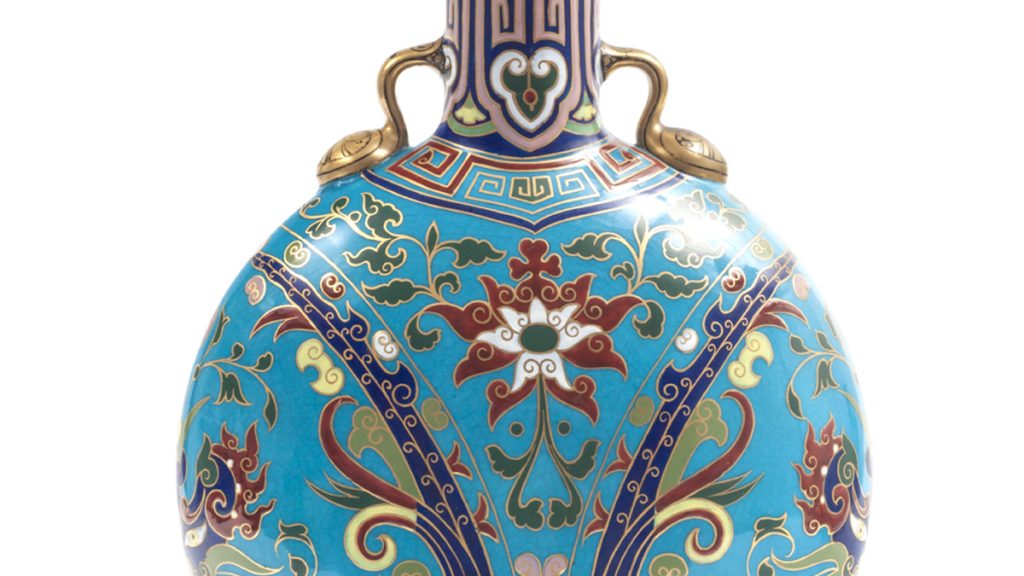19th and Early 20th-Century Ceramics
The 19th century saw the perfection and invention of many new ceramic bodies and methods of decoration. These techniques enabled the mass-production of quality, yet affordable tableware that appealed to a wide segment of the market.
This period was also characterized by stylistic eclecticism. By mid-century, the prevailing neoclassical taste was replaced by a vast array of revival styles, leading to the Gothic revival and a new interest in the art of Antiquity and the Renaissance. At the turn of the century, traditional historical revivals were rejected by proponents of the Aesthetic Movement, Arts and Crafts, Art Nouveau, and Secessionist styles.
The Gardiner Museum’s collection reflects the technological advances and stylistic movements that typify ceramic history in the nineteenth and early twentieth centuries. At the core of this collection are significant holdings of Minton and ceramics for the Canadian market.
1. Moon Flask (detail), England, Stoke-on-Trent, Minton, Deisgned by Christopher Dresser (1834-1904), c.1870-1880, Gift of N. Robert Cumming, G98.1.28
2. Dessert Plate from the Milton Service, "Our Night Camp on Eagle River - Expecting the Crees" (detail), England, Stoke-On-Trent, Minton, c.1967, Purchased with a Gift from N. Robert Cumming, G04.20.1
3. Cake Plate with Arctic Landscape (detail), England, Manufacturer Unknown, c.1840, The Barbara and James Moscovich Collection of Canadian Historical China, G13.15.44

